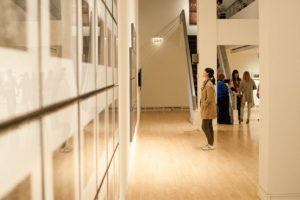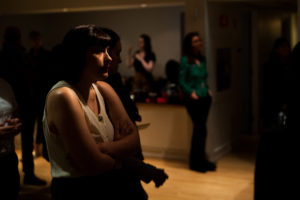Carleton University Art Gallery (CUAG) marked the opening of its summer 2019 exhibitions with a celebration on May 21.
This year, CUAG’s summer exhibitions include a collection by Montreal native Marlene Creates, an environmental artist and poet, and a catalogue of works by Robert Houle, a Saulteaux artist from Winnipeg.

The exhibit is a retrospective—one that includes works of art from many points in the artists career.
Retrospective exhibits allow the viewer to experience a progression of the artist’s work. Creates’s show includes work from as early as 1979.
The exhibit was organized by the Beaverbrook Art Gallery in Fredericton, N.B., and the Dalhousie Art Gallery in Halifax, N.S.
Sandra Dyck, director of CUAG, said after Creates’s exhibit toured in Eastern Canada, the two galleries approached them and asked if Carleton would be interested in presenting it.
“We said ‘absolutely,’ given Marlene’s importance as an artist and her history in Ottawa,” Dyck said.

She said she didn’t get a digital camera until 2008, and still uses very light equipment because she takes many of her photos while hiking, and can’t carry a heavy camera.
“So, I’m very low-tech when it comes to the photography,” she said.
While Creates said she is a native of Montreal, her family is originally from Newfoundland: an influence which can be seen in many of her film photos which are on display in the exhibit.
The event also launched “On Location: Human Interventions in the Landscape,” a display of photos taken by Canadian artists and curated by Carleton graduate students.
Dyck said it has always been important for Carleton’s art gallery to be a place where students can have a chance to curate a show.
Dyck said 30 per cent of CUAG’s exhibitions since 1992 have been curated by students.
“It’s one of our roles and responsibilities as a university art gallery to develop the next generation of curators, so it’s always been a priority for us since our founding in 1992,” Dyck said.
“It’s a pretty amazing number.”
—With files from Tim Austen
Photos by Tim Austen






